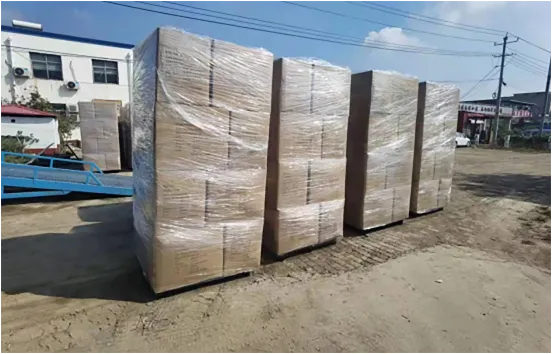
-
 Afrikaans
Afrikaans -
 Albanian
Albanian -
 Amharic
Amharic -
 Arabic
Arabic -
 Armenian
Armenian -
 Azerbaijani
Azerbaijani -
 Basque
Basque -
 Belarusian
Belarusian -
 Bengali
Bengali -
 Bosnian
Bosnian -
 Bulgarian
Bulgarian -
 Catalan
Catalan -
 Cebuano
Cebuano -
 Corsican
Corsican -
 Croatian
Croatian -
 Czech
Czech -
 Danish
Danish -
 Dutch
Dutch -
 English
English -
 Esperanto
Esperanto -
 Estonian
Estonian -
 Finnish
Finnish -
 French
French -
 Frisian
Frisian -
 Galician
Galician -
 Georgian
Georgian -
 German
German -
 Greek
Greek -
 Gujarati
Gujarati -
 Haitian Creole
Haitian Creole -
 hausa
hausa -
 hawaiian
hawaiian -
 Hebrew
Hebrew -
 Hindi
Hindi -
 Miao
Miao -
 Hungarian
Hungarian -
 Icelandic
Icelandic -
 igbo
igbo -
 Indonesian
Indonesian -
 irish
irish -
 Italian
Italian -
 Japanese
Japanese -
 Javanese
Javanese -
 Kannada
Kannada -
 kazakh
kazakh -
 Khmer
Khmer -
 Rwandese
Rwandese -
 Korean
Korean -
 Kurdish
Kurdish -
 Kyrgyz
Kyrgyz -
 Lao
Lao -
 Latin
Latin -
 Latvian
Latvian -
 Lithuanian
Lithuanian -
 Luxembourgish
Luxembourgish -
 Macedonian
Macedonian -
 Malgashi
Malgashi -
 Malay
Malay -
 Malayalam
Malayalam -
 Maltese
Maltese -
 Maori
Maori -
 Marathi
Marathi -
 Mongolian
Mongolian -
 Myanmar
Myanmar -
 Nepali
Nepali -
 Norwegian
Norwegian -
 Norwegian
Norwegian -
 Occitan
Occitan -
 Pashto
Pashto -
 Persian
Persian -
 Polish
Polish -
 Portuguese
Portuguese -
 Punjabi
Punjabi -
 Romanian
Romanian -
 Russian
Russian -
 Samoan
Samoan -
 Scottish Gaelic
Scottish Gaelic -
 Serbian
Serbian -
 Sesotho
Sesotho -
 Shona
Shona -
 Sindhi
Sindhi -
 Sinhala
Sinhala -
 Slovak
Slovak -
 Slovenian
Slovenian -
 Somali
Somali -
 Spanish
Spanish -
 Sundanese
Sundanese -
 Swahili
Swahili -
 Swedish
Swedish -
 Tagalog
Tagalog -
 Tajik
Tajik -
 Tamil
Tamil -
 Tatar
Tatar -
 Telugu
Telugu -
 Thai
Thai -
 Turkish
Turkish -
 Turkmen
Turkmen -
 Ukrainian
Ukrainian -
 Urdu
Urdu -
 Uighur
Uighur -
 Uzbek
Uzbek -
 Vietnamese
Vietnamese -
 Welsh
Welsh -
 Bantu
Bantu -
 Yiddish
Yiddish -
 Yoruba
Yoruba -
 Zulu
Zulu
dropper bottle chemistry
The Role of Dropper Bottles in Chemistry Precision and Convenience
In the world of chemistry, precision is paramount. The accuracy of measurements and the ease of handling various substances can make all the difference in experiments and formulations. One essential tool that embodies these principles is the dropper bottle. These simple yet effective containers play a critical role in the proper administration and usage of liquid chemicals in laboratories, schools, and industries.
A dropper bottle is typically made from glass or high-quality plastic and features a dropper inserted into the neck of the bottle. The design allows for controlled dispensing of liquids, which is essential in many chemical applications. Chemists rely on these bottles for several reasons they offer convenience, precision, and ease of use.
Convenience and Accessibility
Dropper bottles are designed to facilitate quick access to liquids while minimizing exposure and contamination. They can safely store a range of substances, including reagents, solvents, and essential oils. The capillary action of the dropper allows for the controlled transfer of small amounts of liquid, making it especially valuable when dealing with potent chemicals that require precise dosing. This aspect is crucial in laboratories, where even a slight deviation in the amount of a reagent can lead to drastically different results.
In educational settings, dropper bottles are commonly used for experiments in chemistry classes. Students learn the fundamentals of measurements and fluid dynamics while handling dropper bottles, which teach them the importance of precision in science. The ease of use makes them ideal for demonstrations and hands-on learning experiences.
Precision Matters
dropper bottle chemistry

In chemistry, precision can significantly affect the outcomes of experiments. A dropper bottle eliminates the guesswork often associated with pouring liquids. Instead of pouring from a larger container, which can lead to splashes or imperfect measurements, the dropper allows for a single drop to be counted. This capability is particularly important when working with sensitive reactions, such as titrations, where the exact concentration of reagents can determine the success of an experiment.
Moreover, the standardized drop size associated with dropper bottles offers a reliable method for delivering liquids. This is particularly beneficial when formulating compounds, as reproducibility in results depends heavily on consistent measurements.
Applications Beyond the Laboratory
Outside traditional laboratories, dropper bottles find utility in various fields, including pharmaceuticals, cosmetics, and food sciences. They are often used to dispense essential oils in aromatherapy or as a means to measure out ingredients in culinary applications. The versatility of dropper bottles extends their value beyond chemistry, making them essential tools in many industries where precision and convenience are crucial.
Conclusion
The dropper bottle may seem like a simple tool, but it plays an indispensable role in the field of chemistry. Its design promotes accuracy, ease of use, and safety, making it a staple in laboratories and beyond. Whether it’s for educational purposes or professional applications, dropper bottles facilitate the precise handling of liquids that is essential to scientific inquiry and discovery. As we continue to explore the intricacies of chemistry, tools like dropper bottles will undoubtedly remain at the forefront, guiding researchers and students alike toward successful outcomes.
-
Premium 200ml Medicine Bottles – Leakproof Dropper & Spray Options at Best PriceNewsJul.05,2025
-
PTFE Centrifuge Tubes - Chemical Resistant, Leak-proof, Ideal for Laboratory UseNewsJul.05,2025
-
Premium Metal Dropper Bottle for Precise Dispensing 250ml & 1ml Options AvailableNewsJul.04,2025
-
20 ml Headspace Vials - High Quality Polyethylene & Plastic Vials for Lab UseNewsJul.04,2025
-
Small Bottle with Pipette - Precise Dispensing 100ml Pipette Bottles for Essential Oils & Lab UseNewsJun.24,2025
-
Acetic Anhydride Bottle for Accurate Dropper Measurement in Pharmacy Use High-Quality Dropper BottlesNewsJun.10,2025






















